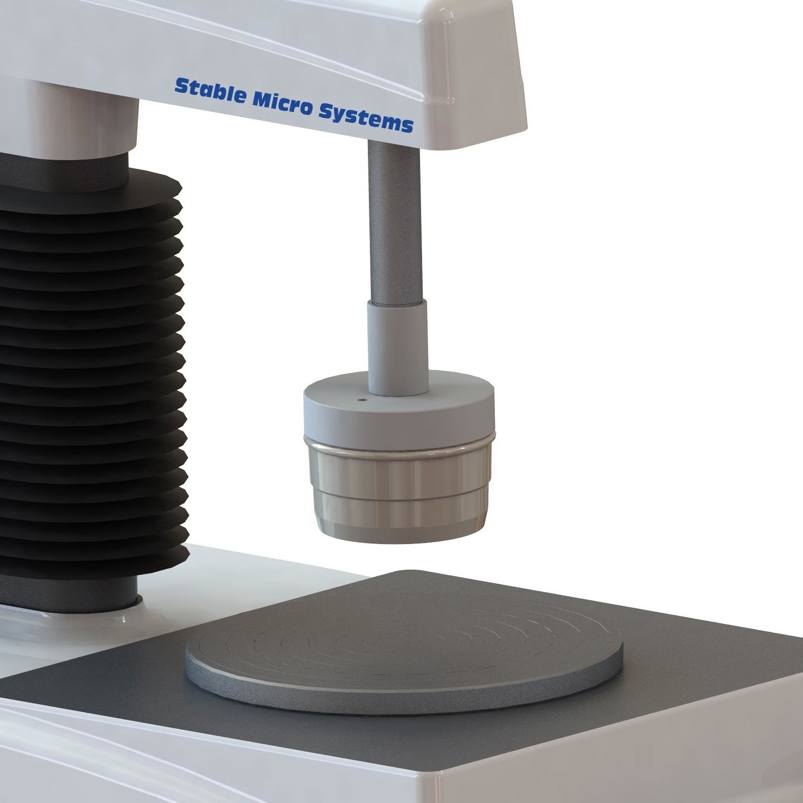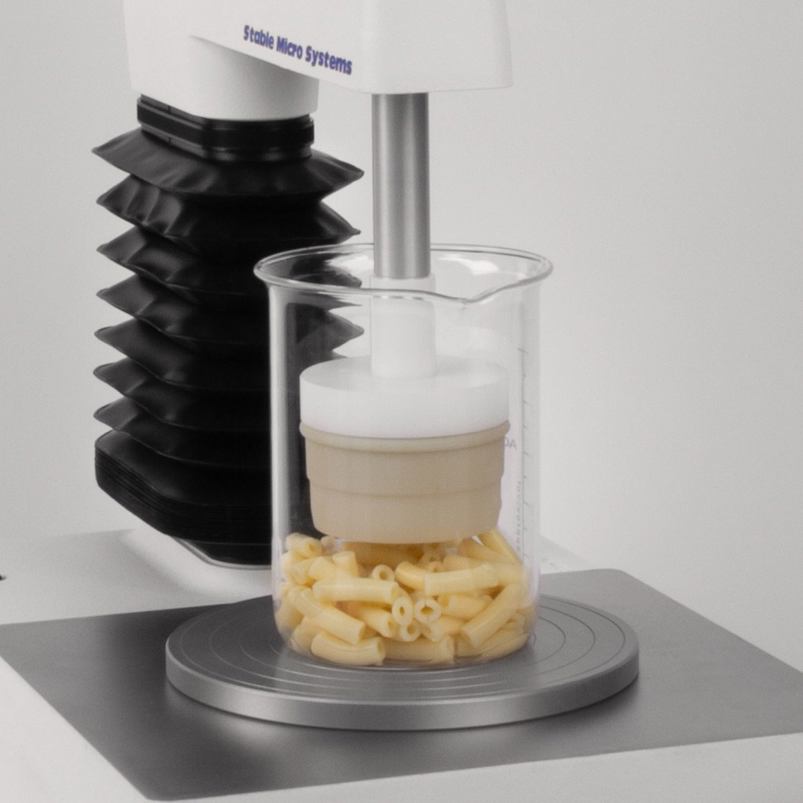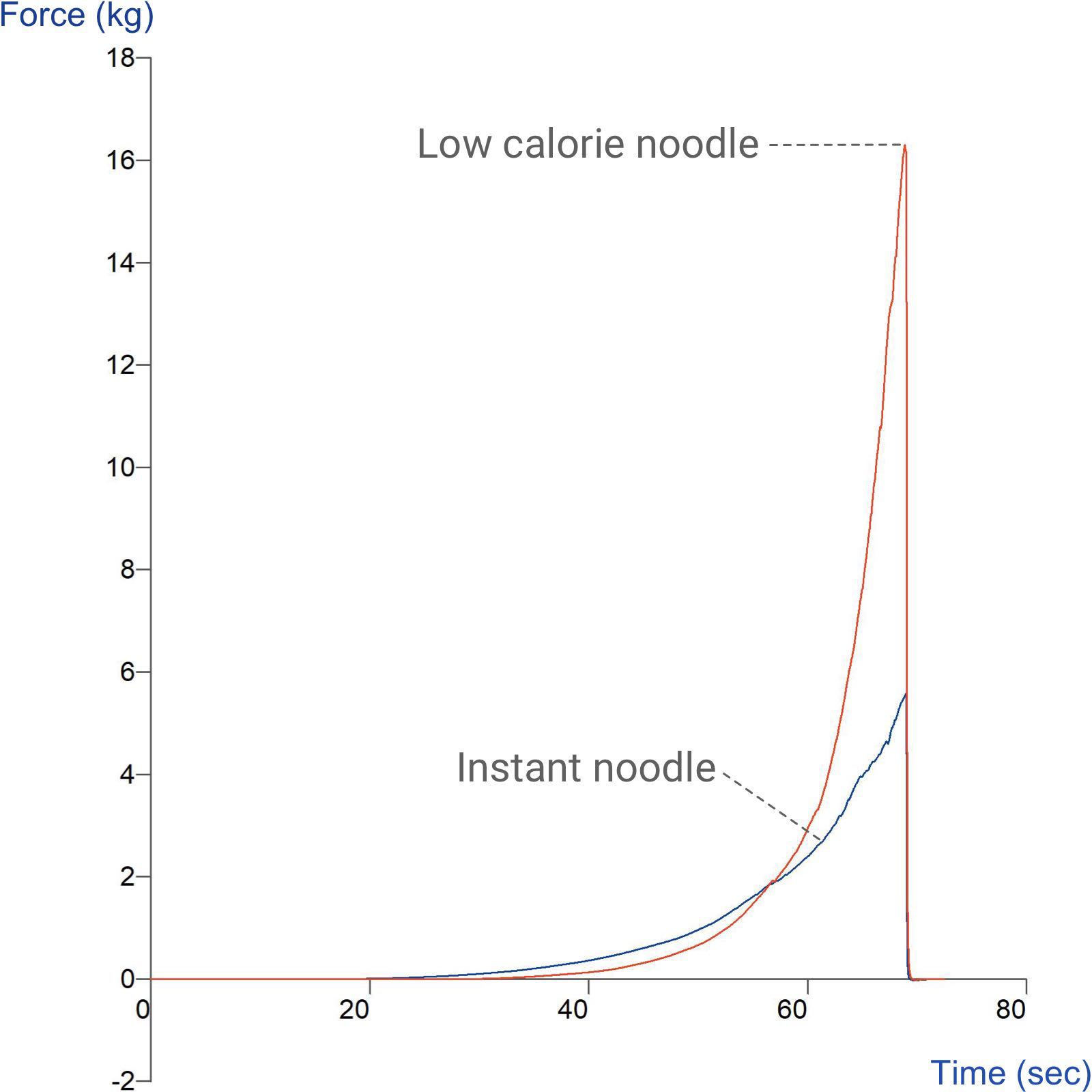Product overview
There is a range of food products which consist of small, irregular and non-uniform particulate pieces which are solid but are predominantly consumed or handled in bulk, e.g. meringues, popcorn, nut clusters, noodles. This range also covers very hard and brittle variable structures which fracture easily when deformed, e.g. cut, snapped, penetrated or compressed. The primary issue of these types of samples is that because they are usually of varying sizes or are of non-homogeneous nature comparisons are difficult. They have a high variability from piece to piece within the same batch and require a sample set to be tested. In this instance, it is usually advised to take a certain number or certain weight of sample and perform a bulk compression or shearing test. This type of test creates an 'averaging effect' and gives the result of a representative number or weight of sample pieces. Whilst a Kramer Shear Cell or Ottawa Cell have been typical options to allow the testing of this type of larger sample the drawback is often that this type of test commonly requires a high force load cell, e.g. 500kg, and therefore lends itself to a TA.HDplusC Texture Analyser application.
Bulk testing can now be performed with a Triple Ring Cutting System which allows the determination of the textural properties of small non-uniform samples in smaller quantities. The design of the test head is based around a cutting array of concentric rings which provides a large cutting surface area in a relatively small device. This enables the testing of a monolayer of sample in a 95mm diameter vessel – a suitable choice to contain the sample to an optimum depth for cutting. The concentric rings cut into the sample during a test (to a chosen distance above the vessel base) and force the sample to breakdown whereby the force during this procedure is gathered. The higher the maximum force and area under the curve the firmer is the sample which would be perceived by the consumer upon eating. A Centralising Platform ensures the test vessel can be quickly located in the ideal test position whilst a magnetic coupling of the test head allows for quick removal and replacement between tests for cleaning. This magnetic quick removal system is the first of its kind in texture analysis and supports the need for test procedures that have efficiency in mind. The cutting rings on the device are also removable for easy cleaning once all tests are complete.
How does the Triple Ring Cutting System work?
Ideal sample form
Multiparticulate material.
Benefits and limitations
- Magnetic attachment speeds up setup between tests.
- Removable rings aids cleaning.Provides a large cutting surface area in a relatively small device.
- Depth of material limited to depth of cutting rings otherwise clogging will occur.
- As this device has only a magnetic coupling it not should not be used where the sample surface is not relatively flat or where the sample heterogeneity would cause off axis loading.
Optional extras
Spare Ring Sets are available separately – A/TRCR
Technical information
Installation
Full installation instructions are provided within the Education Zone of the latest Exponent/Connect software version and on the technical information sheet accompanying this product.
Chemical compatibility
Stable Micro Systems probes and attachments are commonly made from four materials: anodised aluminium (AA6082 T6), stainless steel (316 T), Delrin (acetyl copolymer) and Perspex (polycarbonate).
In general use, probes and attachments made from these materials will be suitable for testing food products and inert non-food materials.
The four materials listed above are not universally resistant to all types of chemicals and as such the compatibility of the probe/attachment material with the product (to be tested) must be established to prevent damage to the probes and attachments. If the compatibility of the product with the probe is unknown to the customer then the chemical information about the product (Material Safety Data Sheet or Product Data Sheet) should be submitted to Stable Micro Systems. Stable Micro Systems will then assess the suitability of the probe/attachment material for use with the product and advise accordingly. If this advice is not sought then Stable Micro Systems will not accept liability for probes/attachments damaged by chemical attack from the product being tested.
Cleaning and maintenance
All probes and attachments may be cleaned in warm (or hand hot) water using a mild detergent. A soft brush may be used but abrasive cleaning aids should be avoided. Stable Micro Systems products should not be microwaved or cleaned in a dishwasher.
Screw threads should be lightly lubricated after drying using a light lubricant, e.g. petroleum jelly, mineral oil. This will aid the fitting and unscrewing of the item. Each component of a probe or attachment should be wrapped separately when stored, to avoid scratching or chipping. This will safeguard against any unnecessary damage to the accessory.



